 A crop and pasture mix.
A crop and pasture mix.
How to select a feedbase for resilience
Meat & Livestock Australia (MLA)-funded research is arming producers with strategies to de-risk their enterprise while filling livestock feed gaps – a challenge which is becoming increasingly important as climatic conditions become less predictable.
CSIRO is leading the ‘Transformational and integrated feedbase for mixed farming zones of southern Australia’ project, which is:
- comparing emerging and existing forage options
- finding innovative ways to incorporate newer legume species with feedbase systems producers currently use.
Two years into the five-year project, researcher Dr Belinda Hackney said they are focusing on how integrating hard-seeded legumes into the feedbase can increase feed availability and quality throughout the year.
Producers participating in the project have established legumes, selected for their capacity to de-risk their livestock and crop production systems while offering increases in feed availability and quality.
“Most producers involved are looking for another management strategy they can put in their toolbox,” Belinda said.
“They wanted to see how legumes – in combination with what pastures and cropping they already have – can benefit their feedbase system.”
Here’s a look at two of the many feedbase options producers are exploring through the project:
Crop-pasture rotationsWhy? To establish a self-sustaining crop–pasture rotation where the legume can regenerate between crop phases without the need for resowing. How? Summer sowing of unprocessed seed or conventional sowing of scarified seed. What species are suitable? (varies with rainfall and soil type, always obtain local advice):
Steps to success Consider the length of cropping phase when choosing an appropriate species as they vary in their residual hard-seed levels. For example, hard-seed French serradella cultivars are better suited to a one-year pasture, whereas biserrula can withstand more than three years of cropping. Set up your legume for future seed-set. It’s important to manage seed-set in the first year to establish a large seedbank as this will support future pasture regeneration after a cropping phase. |
Legumes for fodder conservationWhy? To tackle ryegrass and other weeds. Silage and hay production is a useful tool to control problematic weeds in cropping systems as the crop is cut short before weed seed production. The hay/silage produced can be used to fill feed gaps, maintain breeding stock in droughts and provide opportunities for livestock trading. How? These legumes can either be summer sown using unprocessed seed or conventionally sown in autumn using scarified seed. What species are suitable? (varies with rainfall and soil type, always obtain local advice):
Steps for success Some producers harvest their own legume seed to sow each year for silage or hay production, while others opportunistically use paddocks containing regenerating legumes. Producers are increasingly sowing a winter cereal such as wheat or oats into regenerating paddocks before the autumn break. |
Three tips for legume success
1. Ensure total weed control prior to sowing
Control for two to three years to reduce the risk of weed invasion – the main reason for pasture establishment failure.
2. Use the control inoculant for your legume
Most annual clovers require inoculation with Group C inoculant, serradella with Group S or Group G, and biserrula with biserrula special inoculant.
3. Check for residual herbicides
Keep thorough records of herbicides used in the years preceding pasture sowing and make sure all plant back requirements have been met prior to sowing.



